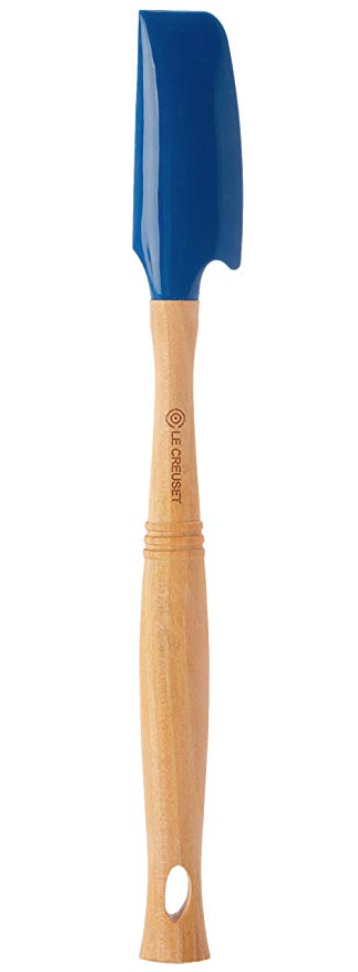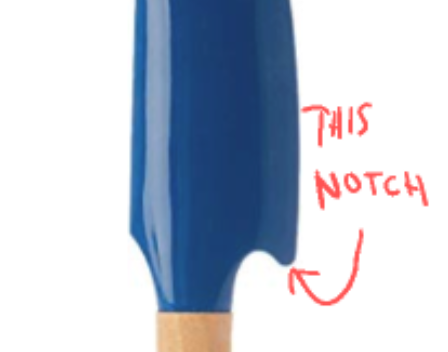2018 wasn’t an awesome year for investors. Let’s chat about it.
[gview file=”https://aldercovecapital.com/wp-content/uploads/2019/01/Q4-2018-Client-Letter.pdf”]
2018 wasn’t an awesome year for investors. Let’s chat about it.
Not to be confused with Three Personal Finance Plaques.
I admit to doing weird stuff to save money sometimes. You (and especially my wife) might say I have a particularly George Costanzan approach.
Season 3, Episode 2, “The Truth”
Elaine (speaking to George): You’re extremely…careful with money.
George: What?!
Elaine: Forget it.
George: I’m cheap? You think I’m cheap? How could you say this to me, I can’t believe it!
Anyway, the truth about this post is that I only have one obscure “personal finance hack.” And it’s not really even a hack, so much as it’s literally about a kitchen utensil. I only told you it was three items because that’s called clickbait. Again, this is a post about a single utensil. Not even three different utensils. You’ll see why.
If you’re still with me, maybe you’re willing to come a little further.
Behold, the jar scraper:

The jar scraper is the index fund of the kitchen. It’s cheap, prevents wasted money, and is only exciting to the truest cheapskates. Its yearly return on investment when compared to financial products is bonkers.
Maybe this is something everyone has in the kitchen, but we were gifted a utensil set recently and this was my first exposure to its brilliance. I realize I might be really late to the jar scraper game.
I had my doubts about the jar scraper. It sat dormant for a long time, awkwardly taking up real estate with other utensils in our starting lineup of spatulas, wooden spoons and whisk. So why did I keep it on the roster for so long if it wasn’t getting any playing time?? I only have the kitchen gods to thank. Praise be.
It was only until an intense moment of peanut butter need that I gave it a shot. My jar of peanut butter seemed woefully empty – I forgot to buy more and saddled myself with nothing but an “empty jar.” My PB&J was surely going to be reduced to a “J” sandwich. But then I saw it in my moment of desperation. It was time to get this jar scraper in the game.
Now, this jar of PB was beyond merely being what I previously knew as empty. It had already been through a thorough scraping from a regular butter knife. How it came to still be in the cabinet was beyond me. Traditionally, this was game over. But this is the magic of the jar scraper. This SOB can scrounge up at least another full serving of peanut butter from seemingly nothing but brown residue.
See that little notch?

The notch is the most important part of the jar scraper. It lets you get underneath the contoured top of any bottle or jar. There’s at least one spoonful of PB under that little shelf and the jar scraper is your key to unlocking it. I promise you, the jar scraper will get it for you and it won’t even complain about it. It works selflessly for you at any time.
Not convinced? Let’s look at the numbers:
Let’s say you are the consumer of $5 of “jarred products” per week. Maybe it’s peanut butter. Maybe it’s jelly. Maybe it’s Nutella. Whatever it is, you like it and you’re wasting a bunch of it. Until now.
My extensive research says there’s roughly 10% of product left for your jar scraper to redeem after an initial round of scraping with a knife. This means you’re wasting 50 cents per week! 50 cents multiplied by 52 weeks gives us $26 per year in JSR, or Jar Scraper Revenue. The Le Creuset jar scraper costs a mere $14, even if you buy it directly from them. That’s an 85% return on investment in the first year alone. Just imagine the compounding effects of decades of jar scraping. Maybe you’ll spend it to build a little shrine for your jar scraper, but the choice is yours.
Don’t just take my word for it. See your new best friend in action:
Do I have your attention? Yes, the previous post here was about a scary data breach. No, the blog isn’t pivoting into doomsday-prepping( sorry, Preppers). But given the recent Anchorage earthquake the subject couldn’t be more timely.
There’s not a distinct and direct financial planning angle here, but I can’t get over the headline of this stunning Seattle Times piece out today:
You can read all the juicy details for yourself – like how they won’t release all the details of the study for fear of exposing infrastructure vulnerabilities – but it’s kind of shook me to the core when thinking about my own disaster preparedness.
Personally, we have some basics on hand but are nowhere near prepared for up to two months without water. I’m sure 99% of the population is in the same boat, which is exactly the big worry. It will be utter chaos if and when The Big One hits. If you live within SPU’s service area – or any water district that could be this vulnerable, which is probably most – it makes sense to start thinking about how to store more water than just a case of small bottles. It’s probably unrealistic to store two months’ worth of water, but shooting for more than whatever’s on hand now is a worthy target.
Click on the links for good places to start on water treatment and water storage.
OK, here’s the small financial angle: It also makes sense to keep some cash on hand as part of your emergency kit. Money talks, especially in an emergency. And, no, I don’t think a thumb drive containing bitcoin is going to do the job.
Specifically having a financial emergency kit could also prove very useful. Here is FEMA’s PDF if you want some late-night reading on the subject. The four main subjects in their Emergency Financial First Aid Kit:
I’m still shocked after seeing what kind of disruption a large earthquake will cause, and that’s only covering one basic need. Hopefully this post will, at nothing else, be reason to check and confirm what level of preparedness you have, and whether you’ve considered the financial angle. I know I’m re-evaluating.
Prepper post: Over.
Today we woke up to news about a massive data breach at Starwood Hotels, as announced by parent company Marriott, which may affect as many as 500 million people. It’s reported to be the second largest breach in history.
Why am I mentioning this? Well, it’s a perfect opportunity for self-indulgent told-ya-so-ism. I recently wrote about how being able to freeze your credit with the three major credit bureaus — for free — is a game changer when it comes to protecting your personal information, and your financial future.
While freezing your credit is not a perfect firewall, it sure makes it less scary when you see headlines like today’s Starwood breach. That’s pretty much financial planning in a nutshell: Doing small annoying things that will pay off big-time in the future. To freeze all three took me about 15 minutes. As someone who has stayed at Starwood hotels, I don’t feel great about this news, but I feel a hell of a lot better than I would have if my credit weren’t frozen.
If you haven’t frozen your credit, here’s the link again.
It’s been kinda nasty out there – what to do about all of the spookiness?